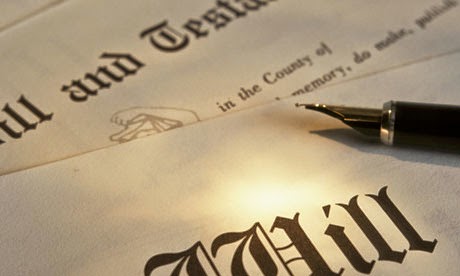Personal Injury Law Compensation Claims

Personal Injury Law is extremely complex and can be difficult to navigate, especially when you are still recovering from your injury. Below is a brief guide of the types of personal injury claims that can be made, your rights and an overview of the process.
Personal Injury Law in Queensland
Personal Injury law is extremely complex and difficult to navigate, largely due to the number of different acts and subordinate legislation governing this area of practice.
Combine this with strict deadlines, insurance companies and complicated pre-action processes, it is an area of law that requires expertise and attention to detail. Lodging a claim for a personal injury is not something you want to do alone. Simply missing a deadline or failing to lodge a form in time can be lethal and result in your claim being rejected or the loss of thousands of dollars.
And all this whilst you are still recovering from your injury.
There are no second chances, so make sure you get advice that you can trust and get it right the first time.
At V.A.J. Byrne & Co. Lawyers we act with honesty, empathy and sincerity to assist you in your matter and help you to navigate these difficult times. We provide real advice to ensure our client’s have informed and realistic expectations.
Your Rights
Personal Injury law in Queensland allows you to make a claim when you have been injured as a result of the actions or negligence of another party. The various acts and regulations allow you to make a claim for loss you have suffered as a result of:
- Workplace injuries
- Motor vehicle injuries
- Public Liability Claims
- Medical negligence
- Asbestos & Silicosis injuries
- Institutional abuse
- Military or Federal Police injuries
How much can you expect to Claim?
Each personal injury is different and the quantum of each claim varies significantly depending on a number of factors.
Ordinarily there are four heads of damages which can be claimed, they are as follows:
- General damages
- Special Damages
- Past economic loss
- Future economic loss
General damages
General Damages is the term used for compensation for pain and suffering and loss of amenities.
It is the quantum of damages awarded to you for the trauma of the injuries, the impact they have on your everyday life and the pain you may have or continue to suffer from.
The amount of general damages to be awarded to each plaintiff is determined by legislation, namely the Civil Liability Regulations 2014 (Qld). This regulation sets out the amount of damages to be paid based on the type of injury, and the seriousness of the injury. The seriousness of the injury is determined by an ISV (Injury Scale Value). This value is determined with the assistance of an independent medical assessment.
Special damages
Special damages are the reimbursement for any expenses paid by you, Medicare or your private health insurer, arising from your injuries.
It is intended to reimburse you for your out of pocket expenses related to any travel, doctors appointments, treatments, rehabilitation, surgeries, and the cost of any medications.
Interest is also claimable for any expenses paid directly by you.
You may also claim for future special damages if it is evident that you will continue to have out of pocket expenses into the future.
Past economic loss
If you have been unable to work as a result of your injuries, or you have had to work at a reduced capacity, you can claim for your loss of income. This is calculated using your pre-injury and post-injury earnings.
You will also be able to claim your loss of superannuation entitlements for those lost earnings. This is why it is important to keep records of any change in your working arrangements, capacity or income resulting from your injuries.
Future Economic Loss
Ordinarily, this is the largest component for serious injuries. If you have injuries which are seriousness enough that you cannot return to work, or you must continue to work at a reduced capacity, then you can claim for your future loss of income for the rest of your working life.
Again, this is calculated using your pre-injury income and your expected future post-injury income.
These calculations are heavily reliant upon independent medical evidence supporting your claim that you are unable to return to work, or you can only return at a reduced capacity.
Superannuation is also payable on any amounts awarded for future economic loss.
Calculation of your damages is a complex matter. V.A.J. Byrne & Co. Lawyers are experienced in these matters and can assist you with an assessment of your damages to ensure nothing is missed.
No Win No Fee*
V.A.J. Byrne & Co. Lawyers offer free initial consultations to assess your personal injury claim, and offer No Win No fee arrangements*.
This ensures you are not out of pocket and can obtain stress and obligation free advice in relation to your rights and any potential claim you may have.
Personal Injury matters can be stressful, complicated and may take years to resolve. Give yourself peace of mind and book an appointment with our one of our Personal Injury lawyers to protect your future.
*subject to the terms of our conditional cost agreement.
Workplace Injuries
What should you do if you have been injured at work?
If you have been injured at work, travelling to or from work, or because of work, you should:
- see your doctor as soon as possible to have your injuries assessed and get a workers compensation medical certificate
- tell your employer about your injury and give them a copy of your medical certificate
- lodge your claim with WorkCover Queensland
- keep copies of all documents relating to your injury and claim including;
- receipts for all out of pocket expenses;
- records of your travel for appointments and rehabilitation;
- a list of your treating medical practitioners;
- all X-rays and scans;
- all doctors reports and summaries;
- your payslips and tax returns;
- all correspondence sent to and from your employer;
- a diary noting events relevant to your injury, treatments, the pain you are experiencing, and physical or mental symptoms you are experiencing, activities you now have difficulty with or can no longer undertake.
- consult a lawyer
The claim process
There are 2 types of WorkCover claims:
- statutory (no-fault) claims – often referred to as a Workcover claim;
- common law claims (where the employee seeks common law action through the courts against their employer).
All claims made in Queensland first need to be lodged as a statutory (no-fault) claim.
This involves you making a Workcover claim through your workplace.
Workcover will assess your claim, and if accepted, assist you in treating your injuries and your rehabilitation with a view of returning you to work. If your claim is approved, Workcover may continue to pay your salary even if you cannot work with a view of ensuring you do not suffer any financial loss and getting you back to work.
For a full understanding of what Workcover offers and their role in your rehabilitation head to https://www.worksafe.qld.gov.au/rehabilitation-and-return-to-work.
The statutory Workcover process concludes when Workcover issues you with a Notice of Assessment. This is an assessment of your injuries from an independent medical examiner and brings about an end to your Workcover payments and support. What a statutory Workcover claim does not do is compensate you for any out of pocket expenses, pain and suffering or future loss of income and superannuation. This is why a common law claim is important.
A Notice of Assessment is required before you can begin a common law claim.
A common law claim involves suing your employer through the court system to compensate you for your loss. This process is initiated by service of a Notice of Claim on Workcover or such other insurer of your workplace. After service of this notice there are a number of ‘pre-action’ steps which must be taken prior to initiating court proceedings. This allows the parties every opportunity to settle the matter before engaging with the court process.
It is usually at this stage of the process where medical experts will be engaged to provide a medicolegal report. This is an independent medical report which evidences the extent of your injuries, their impact on your work and life and your prognosis. Medicolegal Reports are essential ‘independent’ evidence of your injuries and your ongoing loss.
Matters are then set for a ‘pre-action’ conference which is a form of alternative dispute resolution. It allows the parties to put forward their respective positions and attempt to negotiate an outcome before proceeding to the court process. If the matter does not resolve at this conference, a Claim and Statement of Claim is filed with the Court, initiating the court process. From here the standard process of pleadings, exchange of disclosure, mediation and trial applies.
Important Dates
6 months from date of Injury Make your statutory Workcover Claim
3 years from date injury Service your Notice of Claim.
There may be some circumstances where your limitation periods may be extended by agreement or Order of the Court. However in most circumstances, breaching the limitation periods above are fatal to your claim.
V.A.J. Byrne & Co. are able to assist and guide you through your common law claim. Whether you have recently been injured or have already got a WorkCover claim on foot, we encourage you to book an free initial appointment with our office.
Motor Vehicle Injuries
If you have been injured in a vehicle accident, whether it be in a car, truck, motorbike, bicycle, scooter or as a pedestrian you may have a personal injury claim.
Queensland has a compulsory third party insurance scheme (CTP Scheme), which means all drivers in Queensland must be covered by a CTP policy when operating a vehicle. The CTP Scheme is a common law scheme, which allows you to sue the insurer as opposed to the actual at fault driver.
When the accident is the fault of another driver, or the driver of the vehicle in which you were passenger, you can make a claim against the Compulsory Third Party Insurer of that person.
This allows you to make a claim for your loss, irrespective of the financial circumstances of the at fault driver.
In circumstances where you are unable to identify the at fault driver, or the at fault driver did not have CTP, you may still proceed with your claim against the ‘nominal defendant’. This ensures you are not prejudiced because the at fault driver failed to ensure they were insured.
What should you do if you have been injured?
If you have been injured in a motor vehicle accident you should:
- Report the accident to police and obtain your reference number;
- Make a note of the at fault drivers name, and registration of their vehicle;
- See your doctor as soon as possible to have your injuries assessed and get a Motor Accident Insurance Commission Medical Certificate;
- Fill out and submit a Notice of Accident Claim Form with the CTP insurer of the vehicle at fault. If the vehicle is uninsured you should obtain independent legal advice as soon as possible;
- keep copies of all documents relating to your injury and claim including;
- receipts for all out of pocket expenses;
- records of your travel for appointments and rehabilitation;
- a list of your treating medical practitioners;
- all X-rays and scans;
- all doctors reports and summaries;
- your payslips and tax returns;
- all correspondence sent to and from your employer if you are unable to work;
- a diary noting events relevant to your injury, treatments, the pain you are experiencing, and physical or mental symptoms you are experiencing, activities you now have difficulty with or can no longer undertake.
- Obtain legal advice as soon as possible.
The claim process
Unlike Workcover there is no statutory regime for motor vehicle injuries.
All claims proceed by way of a common law claim, which is initiated by a Notice of Claim.
Once notice has been served on the relevant insurer there are a number of ‘pre action’ steps which must be taken prior to initiating court proceedings. The purpose of these steps is to allow the parties every opportunity to finalise the claim by agreement prior to engaging with the court process.
It is usually at this stage of the process where medical experts will be engaged to provide a medicolegal report. This is an independent medical report which evidences the extent of your injuries, their impact on your work and life and your prognosis. Medicolegal Reports are essential ‘independent’ evidence of your injuries and your ongoing loss.
Matters are then set for a ‘pre-action’ conference which is a form of alternative dispute resolution. It allows the parties to put forward their respective positions and attempt to negotiate an outcome before proceeding to the court process. If the matter does not resolve at this conference, a Claim and Statement of Claim is filed with the Court, initiating the court process. From here the standard process of pleadings, exchange of disclosure, mediation and trial applies.
Important Dates
9 months from injury or 1 month
from attending upon a lawyer
(whichever occurs first) Serve Notice of Claim on Insurer
3 years from date of injury Initiate Court Proceedings.
There may be some circumstances where your limitation periods may be extended by agreement or Order of the Court. However in most circumstances, breaching the limitation periods above are fatal to your claim.
V.A.J. Byrne & Co. are able to assist and guide you through your common law claim. Whether you have recently been injured or have already got a claim on foot, we encourage you to book an free initial appointment with our office.
Public Liability Claims
The Personal Injuries Proceedings Act allows you to make a claim for personal injuries which you have suffered which are not a workplace injury or a motor vehicle accident.
Commonly referred to as ‘slips, trips & Falls’, the Act covers injuries which you have suffered as a result of negligence in a public place.
Some examples of common injuries covered by Public Liability law include:
- A slip and fall accident caused by negligence. This may be caused by broken, damaged, Slippery or poorly lit sidewalks, footpaths or high foot traffic areas.
- Injuries caused by poor workmanship. For example the failure of a product used in a public place or the falling or failure of temporary structures.
To be successful in a claim under Public Liability law you must prove that the accident occurred in the defendant’s property, and resulted from the defendant’s negligence.
This will at times require expert evidence to prove the defendant acted negligently, as CCTV or eyewitness evidence is not always available. An experienced solicitor can assist you in evaluating your case and gathering the evidence required to meet the test needed to pursue a claim.
What should you do if you have been injured?
- Where possible take photographs of the area where the injury occurred and determine if there were any witnesses/ CCTV footage.
- See your doctor as soon as possible to have your injuries assessed;
- keep copies of all documents relating to your injury and claim including;
- receipts for all out of pocket expenses;
- records of your travel for appointments and rehabilitation;
- a list of your treating medical practitioners;
- all X-rays and scans;
- all doctors reports and summaries;
- your payslips and tax returns;
- all correspondence sent to and from your employer if you are unable to work;
- a diary noting events relevant to your injury, treatments, the pain you are experiencing, and physical or mental symptoms you are experiencing, activities you now have difficulty with or can no longer undertake.
- Obtain legal advice as soon as possible.
- Complete Part 1 of the Notice of Claim and serve on the defendant.
The claim process
All claims proceed by way of a common law claim, which is initiated by a Notice of Claim.
There are two parts to a Claim, Part 1 and Part 2 and they are served on the Defendant at different times.
Once notice has been served on the relevant insurer there are a number of ‘pre action’ steps which must be taken prior to initiating court proceedings. The purpose of these steps is to allow the parties every opportunity to finalise the claim by agreement prior to engaging with the court process.
It is usually at this stage of the process where medical experts will be engaged to provide a medicolegal report. This is an independent medica report which evidences the extent of your injuries, their impact on your work and life and your prognosis. Medicolegal Reports are essential ‘independent’ evidence of your injuries and your ongoing loss.
Matters are then set for a ‘pre-action’ conference which is a form of alternative dispute resolution. It allows the parties to put forward their respective positions and attempt to negotiate an outcome before proceeding to the court process. If the matter does not resolve at this conference, a Claim and Statement of Claim is filed with the Court, initiating the court process. From here the standard process of pleadings, exchange of disclosure, mediation and trial applies.
Important Dates
9 months from injury or 1 month
from attending upon a lawyer
(whichever occurs first) Serve Notice of Claim Part 1 on defendant
2 months from Response to Notice Serve Notice of Claim Part 2 on defendant.
3 years from date of injury Initiate Court Proceedings.
There may be some circumstances where your limitation periods may be extended by agreement or Order of the Court. However in most circumstances, breaching the limitation periods above are fatal to your claim.
V.A.J. Byrne & Co. are able to assist and guide you through your common law claim. Whether you have recently been injured or have already got a claim.
Book an appointment with one of our experienced and compassionate practitioners to get advice about your specific circumstances today
Recent Posts
Lets have a chat
Do you have any questions?
Let’s make a time to sit down and discuss your query so the team at V.A.J. Byrne & Co. Lawyers can advise you on the best solution moving forward.
Gladstone & Bundaberg Offices:
Phone: (07) 4972 1144
Email: office@byrnelawyers.com.au
Postal Address: PO Box 273 Gladstone QLD 4680
Gladstone Street Address:
148 Auckland Street
Gladstone QLD 4680
Hours of Business:
8:30am to 5:00pm
Monday to Friday
(except Public Holidays and Christmas Closure)
Bundaberg Street Address:
Suite 2, 36 Barolin Street
Bundaberg QLD 4670

Serving the CQ Region since 1931








